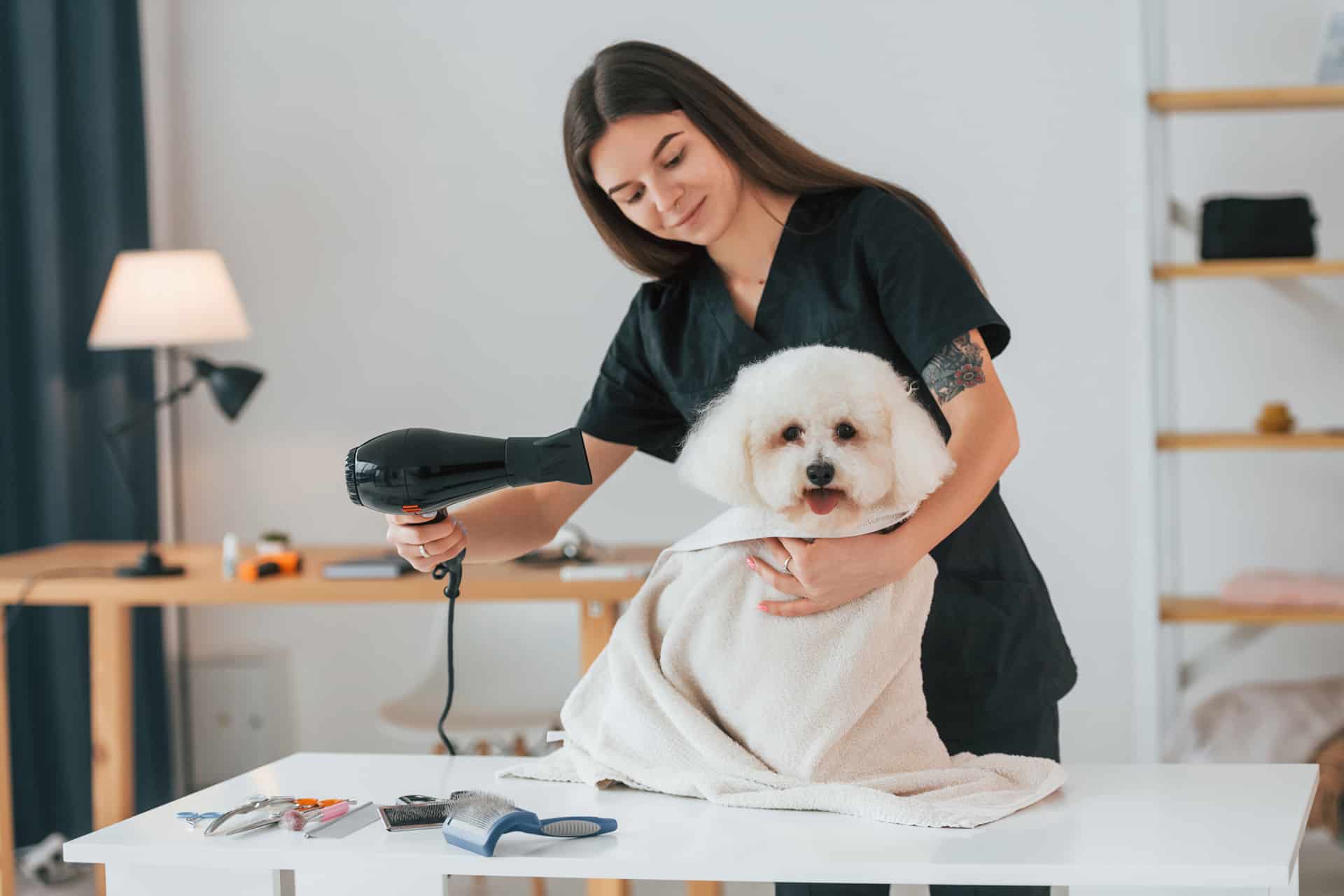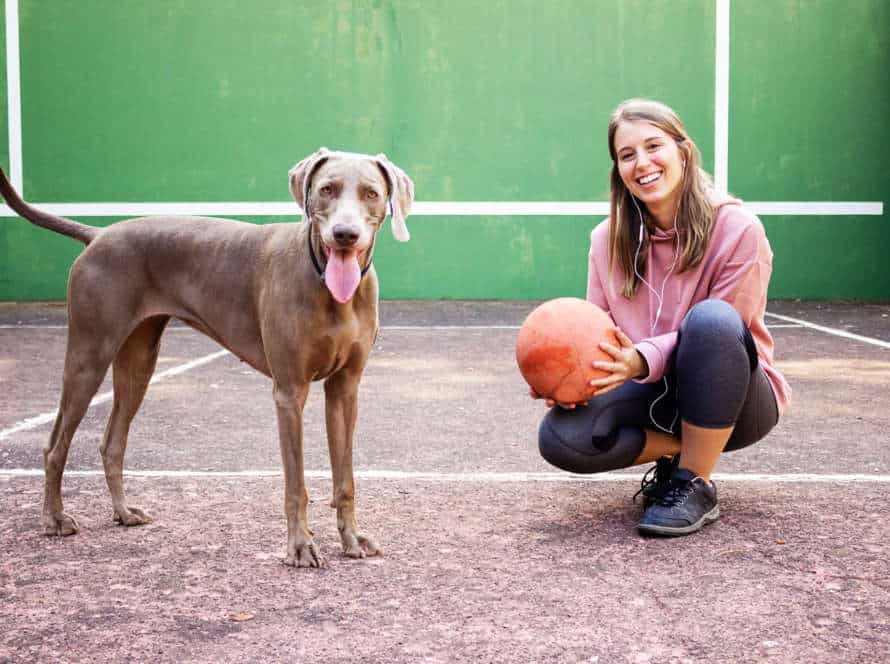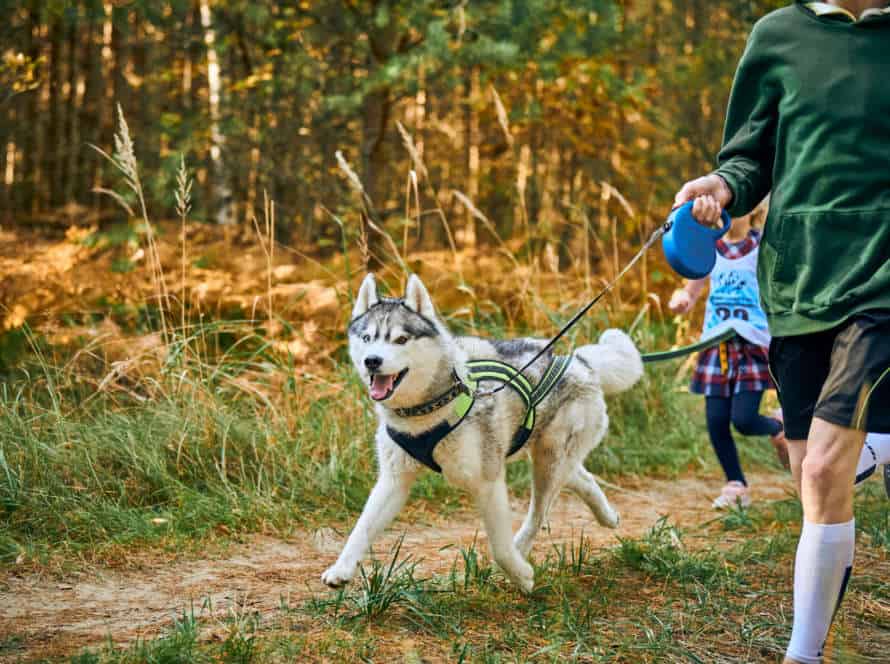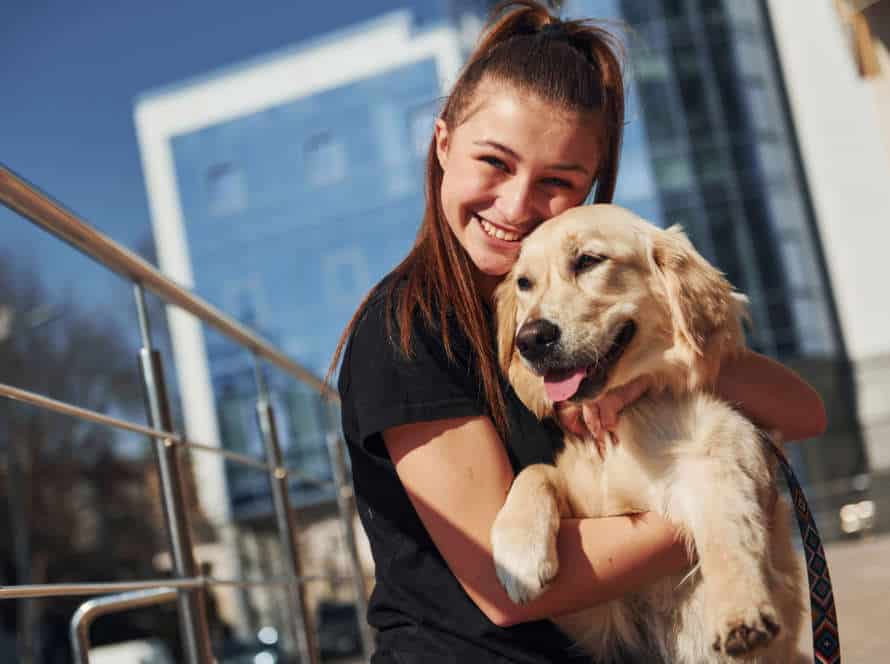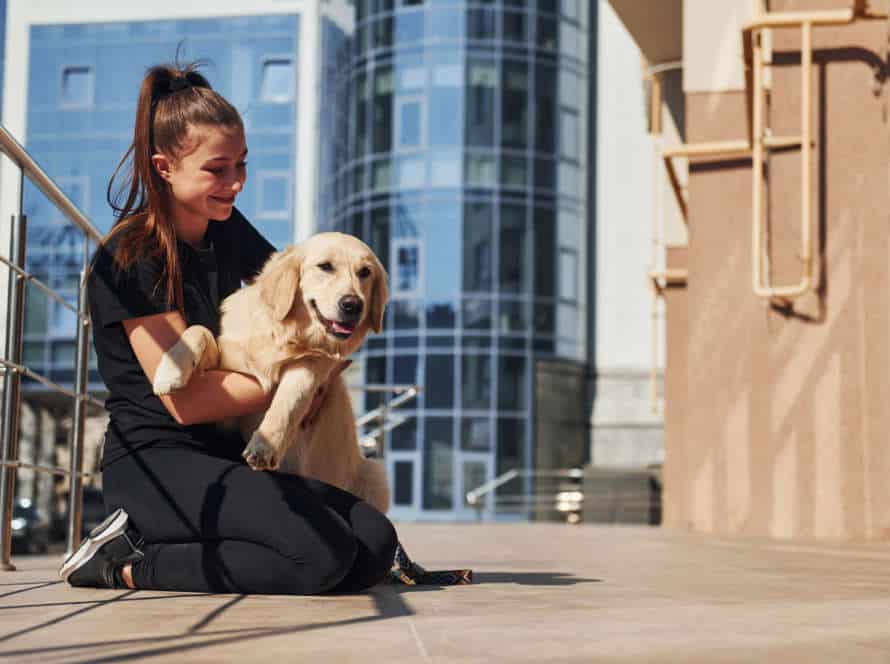Top Dog Grooming Tips for a Well-Groomed Canine
As a pup parent, grooming is key for your canine’s hygiene. Here are top tips to keep your pet happy and healthy:
- Brushing: Brush their fur every so often to keep it clean, glossy, and free from knots and mats. Depending on their coat type, you may need a slicker brush, shedding blade, or metal comb.
- Bathing: Give them a bath every 4-6 weeks or when necessary. Use a dog-specific shampoo and conditioner to prevent dry skin or irritation. Ask your vet if your pup has a skin condition.
- Nail trimming: Trim their nails to avoid them getting too long, which can cause discomfort and change their gait. Use clippers or grinders and be careful to avoid the quick, which is a sensitive nerve inside the nail.
- Ear care: Check their ears for infection or inflammation. Clean the outer ear with cotton and a dog-specific solution when it’s needed.
- Teeth cleaning: Clean their teeth with a dog-specific toothbrush and toothpaste. This avoids tooth decay, gum disease, and bad breath.
By following these grooming tips, your furry friend will be healthy, clean, and looking their best!
Understanding Your Dog’s Coat Type
Know your pup’s coat type! It’s the first step in keeping your dog looking and feeling their best. Various coat types need different maintenance, so let’s explore these and their grooming needs. Get your doggo groomed to perfection!
Identifying different coat types
It’s important to know the type of coat your pup has! Here’s a look at these four main coat types and their unique features:
- Smooth coat: Short, glossy and close to the body. Not much grooming is required.
- Double coat: Undercoat is thick and fluffy, with longer guard hairs on top. Must brush regularly to prevent matting and shedding.
- Wired coat: Course and dense with a rough texture. Needs trimming regularly to keep its shape and texture.
- Curly coat: Thick, curly and dense. Needs regular grooming and trimming, as curly hair can easily become tangled and matted.
Knowing your pup’s coat type and its grooming needs is the best way to care for your furry friend!
Tips for grooming a thick double coat
A double-coated dog breed needs special grooming techniques to keep its coat healthy and beautiful. It has two layers of hair – an insulating undercoat and a protective outer coat – providing warmth and protection.
Here are some tips for grooming a thick double coat:
- Brush your pup’s coat regularly to remove loose fur, mats, tangles or debris. Use a slicker brush or rake brush based on the thickness of the coat.
- Bathe your pup when necessary, using special dog shampoo and rinse really well. Dry the coat with a towel or low-heat hairdryer.
- Trim the fur around the ears, paws and tail with a blunt-tipped scissor or get help from a professional groomer.
- Keep the undercoat free of knots or mats which can make the coat matted and tangled.
- Give your pup a balanced diet to promote a healthy coat.
Pro tip – Always brush your pup’s hair downwards, following the direction of its hair growth. This makes brushing less uncomfortable for your furry friend.
Tips for grooming a curly coat
Grooming a curly coat on a dog takes special care. Poodles, Labradoodles and Bichon Frises need extra attention. Here are tips:
- Use a stainless steel comb and brush to detangle.
- Trim the coat with scissors or clippers to keep it tidy.
- Brush and comb before and after bathing.
- Apply a shampoo and conditioner for their coat type to avoid matting and tangling.
- Trim hair around ears, eyes and paws.
- Check for parasites and signs of skin irritation or infections.
With the right care, your pup will have a beautiful and healthy coat.
Essential Grooming Tools
Grooming tools are a must for your pup’s look and feel. Different tools have different purposes, so it’s important to know what tool is best for the job. In this article, we’ll explore the fundamental tools for a properly-groomed pup. Plus, we’ll give you tips for selecting the perfect tools for your furry buddy!
Understanding different grooming tools
Pet grooming is a must to keep your pup healthy and happy. Knowing the right grooming tools can help you achieve this quickly. Here are the tools and how to use them:
- Slicker brush – great for removing tangles and mats from a long or medium-haired dog’s coat without damage.
- Pin brush – perfect for dogs with long hair that tangles easily. It helps get rid of loose hair and stubborn mats.
- Nail clippers – needed to prevent nails from growing too long and causing discomfort. Choose sharp blades and only cut the tip of the nail.
- Grooming scissors – essential for trimming any extra hair after brushing. Get scissors with rounded tips to prevent accidental injury.
- Hair clippers – a must for those who prefer to trim their pet’s hair at home. Find a clipper that’s safe and easy to use to avoid hair disasters.
With the right tools, pet owners can create a routine that keeps their pup happy and healthy in the long run.
Best dog grooming tools on the market
Grooming your pup is essential for their wellbeing. To do so, you need the best dog grooming tools. Here are some of the top on the market:
- Slicker Brush: Perfect for removing mats, tangles and fur from fur.
- Shedding Blade: Ideal for taking out loose fur from the undercoat and reducing shedding.
- Nail Clippers: Vital for their health and comfort. Get durable, high-quality ones for a safe experience.
- Grooming Scissors: Useful for trimming and shaping fur, especially around the face and paws.
- Deshedding Tool: Perfect for breeds that shed heavily, like Huskies and German Shepherds.
The right tools can keep your pup’s coat healthy, reduce shedding, prevent matting and keep nails at an appropriate length. Pro Tip: Consult a pro groomer or vet to determine the best tools for your pup’s breed.
How to properly clean and maintain your tools
To keep your grooming tools in good condition, you must clean and maintain them properly. Follow these instructions:
- Firstly, use a cleaning brush to remove any hair or debris from the blades and bristles.
- Then, use a cloth or paper towel dampened with rubbing alcohol to clean and disinfect the tool.
- Thirdly, lubricate the blades with oil or clipper spray after cleaning to keep them sharp and stop them from rusting.
- Fourthly, store the tools in a dry and cool place like a cabinet or drawer. This will prevent damage or moisture.
- Lastly, check for any loose screws or parts that may need tightening or replacing.
Doing these steps frequently will extend their lifespan, improve their performance and keep your dog healthy and groomed.
Bathing Your Dog
Bathing your pup is an essential part of canine grooming! It helps keep their skin and coat healthy and looking fabulous. Here are some tips to keep in mind when you bath your doggy. Make it a safe and comfortable for both of you. Here are the best techniques for pooch bathing:
- Prepare the bath area beforehand so that you have everything you need within reach, including towels, shampoo, and any other grooming tools you might need.
- Brush your dog’s coat thoroughly before you begin the bathing process. This will help remove any tangles or mats and help the shampoo lather better.
- Use warm water and a gentle pet shampoo when bathing your dog. Be sure to avoid getting shampoo in their eyes and ears.
- Rinse your dog thoroughly to make sure all shampoo is removed from their coat. Leftover shampoo can irritate their skin.
- Dry your pup off with towels or a hair dryer on low heat. Make sure they are completely dry before letting them outside to avoid them getting sick.
How often to bathe your dog
Frequency of bathing your dog changes with breed, coat type and lifestyle. Too much bathing leads to skin irritation and dryness, while too little can cause bad smells and infections. Here’s how to decide:
- Consider the breed/coat type. Oily, water-resistant coats (Labradors) need fewer baths; longer/curly hair needs more.
- Look at their activities. If they spend time outdoors, muddy/swimming, you may need to bathe them more.
- Use your nose. If your pup smells, bath time!
- Aim for once every 3 months, but adjust as needed. Pro tip: Use mild, dog-specific shampoo to avoid skin issues.
Best shampoo and conditioner for dogs
Finding the perfect shampoo & conditioner for your pup can make a big difference in their grooming routine! Here are some top picks:
- Earthbath All Natural Pet Shampoo: Natural ingredients perfect for all dogs! Leaves coats shiny & smelling fresh.
- Buddy Wash Original Lavender & Mint Dog Shampoo & Conditioner: Gentle on skin, no harsh chemicals & a refreshing scent.
- Burt’s Bees for Dogs Oatmeal Shampoo: Colloidal oatmeal & honey soothe dry & itchy skin, leaving it moisturized & soft.
- Vet’s Best Hypo-Allergenic Shampoo for Dogs: Fragrance-free, gentle on skin, provides relief from itching & keeps coat shiny & clean.
- Wahl Dry Skin & Itch Relief Pet Shampoo: Ideal for dogs with sensitive skin, eczema & other skin conditions. Soothes irritated skin & reduces itching & flakiness.
Remember to always select a shampoo & conditioner specifically created for dogs & free from any dangerous chemicals or fragrances.
Proper bathing techniques to avoid skin irritation or infection
For healthy skin and coat, it’s essential to use the right bathing techniques for your pup. Here’s how:
- Choose a shampoo that suits your pup’s skin type. If dry, use a moisturizing one. Oily skin needs a grease-fighting product. Never use human shampoo on dogs.
- Wet your dog with warm water but be careful not to get it in their eyes, ears, or nose.
- Gently massage shampoo into their coat, avoiding sensitive areas like face and genitals.
- Rinse off all shampoo with warm water.
- Dry your pup off with a towel, being gentle around face and ears.
- Brush their coat to remove any tangles or mats.
Follow these tips and your pup will stay clean and healthy!
Brushing Your Dog’s Teeth
Brush your pup’s teeth? It’s essential! Not only for their oral health, but also for their overall health. Prevents cavities, gingivitis and other diseases.
Need tips? Read on! Get all the info you need to brush your pup’s teeth properly.
Why it’s important to brush your dog’s teeth
Brushing your pup’s teeth is a must for their health. Same as you, your pup can suffer from dental problems like gum disease, cavities, and bad breath. Brushing regularly helps avoid these issues and keeps your pup’s teeth healthy.
Here are a few reasons why it’s significant to brush your pup’s teeth:
- Gum disease prevention: Brushing your pup’s teeth routinely helps stop gum disease caused by plaque and tartar buildup.
- Saving on vet bills: Dental issues can lead to pricey vet bills. Regular brushing can avoid the need for costly dental procedures.
- Fresher breath: Pups can have bad breath too. Brushing their teeth can reduce bad breath and keep their mouths smelling fresh.
- Better overall health: Poor dental hygiene can cause systemic infections and other serious health issues. Brushing regularly can help keep your pup healthy and content.
Remember to utilize toothbrushes and toothpaste designed especially for pups, as human toothpaste can be dangerous.
Steps to successfully brush your dog’s teeth
It’s vital for your pup’s grooming routine to brush their teeth to keep their dental hygiene. Here’s how to do it:
- Let your doggy sniff and taste the toothbrush and toothpaste to get acquainted.
- Gently lift their lip and brush their back teeth with small, circular motions.
- Move to the front teeth and brush both on the outside and inside surfaces.
- Use toothpaste and brushes that are specially made for dogs – don’t use human toothpaste and brushes as they can harm them.
- Be patient, keep the brushing sessions short and reward them with treats and praise.
- Try to brush your pup’s teeth daily or at least three times weekly.
Pro tip: If your doggy is hesitant, start off slow by letting them taste the toothpaste on your finger. Then, when they’re ready, move on to toothbrush.
Natural alternatives to traditional toothpaste
I apologize for any confusion. Can you please clarify which text and heading you are referring to?
Ear and Nail Care
Grooming your pup? Get to it! Not only for a pretty look, but also for their overall health. Ears and nails matter, and proper care makes a world of difference. For top tips, read on.
- Cleaning dog ears and clipping nails regularly are essential.
- Nail trimming stops claws from growing too long and causing discomfort.
- Ear cleaning prevents ear infections.
So, show your pup some love and keep ’em groomed!
How to safely and effectively clean your dog’s ears
Cleaning your pup’s ears is a must-do grooming task. For safe, successful cleaning, here’s what to do:
- Gather supplies: cotton balls, ear cleaner, treats.
- Examine your dog’s ears for signs of irritation, discharge, or a bad smell.
- If there’s too much hair in their ears, trim it to increase airflow.
- Put several drops of the ear cleaner in their ear canal.
- Massage the base to remove dirt and debris.
- Use a cotton ball or rag to wipe away dirt, debris, and extra solution.
- Reward your pup with treats and praise.
Be gentle and patient while cleaning your dog’s ears. If they act uncomfortable, stop and talk to your vet.
How to trim your dog’s nails without causing pain or injury
Trimming your pup’s nails is an important part of their grooming routine. Here are some tips to help you trim them without causing any hurt or injury:
- Introduce your doggo to the nail trimmers and handle their paws regularly to get them familiar with the process.
- Use sharp trimmers made for dogs to get a clean cut without any crushing or pressure.
- Trim their nails slowly and in small amounts, avoiding the quick – a pink-colored vein inside the nail. Cutting this can cause pain and bleeding.
- For dark-colored nails, use a torch or a bright light to identify the quick and dodge it.
- Reward your pup with treats and compliments for their patience and cooperation during the process.
Regular trimming of your pet’s nails prevents them from overgrowing, splitting, and breaking, which can lead to pain and diseases.
Pro tip: If you’re uncertain or anxious about trimming your pup’s nails, think about taking them to a professional groomer or a vet for help.
Risks of neglecting ear and nail care
Neglecting ear and nail care in dogs can result in serious health issues and a decrease in their overall well-being. Here are some of the risks:
- Ear infections: Bacteria and yeast can accumulate if not cleaned, causing pain, infections, or hearing loss.
- Ingrown nails: Nails can grow into the paws if not cared for, causing pain, discomfort, and infection.
- Bone and joint problems: Long nails can change the way a dog walks, resulting in bone and joint issues.
- Behavioral issues: Painful ear infections or ingrown nails can lead to aggression or anxiety.
Regular ear and nail care is crucial to ensure good health and quality of life for your pup.
Dealing with Common Grooming Issues
Dealing with common grooming issues is crucial for dog grooming. From dry skin to bad breath, excessive shedding to fleas – there are solutions! Here are the top tips for successfully grooming your pup and making them look their best.
Matting and tangles
Matting and tangles can be a common issue in dogs. To prevent and address these problems, regular brushing and detangling is key. Here are some top tips for dog grooming, to keep your pup well-groomed and mat-free:
- Brush or comb your dog’s coat weekly with a slicker brush.
- For longer hair, use a detangling spray or conditioner before brushing.
- Gently remove tangles and mats with fingers or a dematting tool, starting from the bottom.
- Don’t shave as a first resort – it can damage the hair follicles and cause more matting.
- Severely matted coats? Get a professional groomer to avoid discomfort or pain.
Follow these tips to keep your dog looking and feeling great – no more mats and tangles!
Shedding
Shedding? It’s a common problem for dog owners. Here’s some tips to help minimize it:
- Brush your pup with a slicker brush or shedding blade. This gets rid of loose hair and stops mats forming.
- Bathe them with a mild shampoo for dogs. Avoid human shampoo – it can make their skin dry, causing more shedding.
- Give them a protein-packed diet – it helps their skin and coat, reducing shedding.
- Keep them hydrated – dehydration can cause dry skin and more shedding.
- Check with your vet – some health issues cause hair loss.
Pro tip: Grooming often not only reduces shedding, it also strengthens the bond between you and your pup.
Fleas and ticks
Fleas and ticks are one of the most common grooming issues for dog parents. Here are some top tips to keep your pup free from fleas and ticks:
- Regular grooming: Grooming often can help you spot fleas and ticks on your dog’s coat. So, groom your pup more frequently to get rid of fleas and ticks.
- Use a flea comb: A flea comb is great for trapping fleas and ticks. Comb your dog’s coat with a flea comb daily.
- Keep your home clean: Fleas and ticks can live on your carpets, bedding, and furniture. Vacuum often and keep your home clean to prevent flea and tick infestations.
- Use flea and tick treatments: Ask your vet which flea and tick treatments are right for your pup. There are shampoos, sprays, collars, and medications available on the market.
Follow these tips to help keep your pup happy and healthy.
Pro tip: Always check for fleas and ticks after a walk or playtime when your dog has been outside for a long time.
Professional Dog Grooming Services
Pamper your pup with professional grooming services! This is a great way to keep them neat and tidy. It can help them look and feel their best. A pro groomer can do more than just a light trim or shampoo. They can also manage a tough coat or fur, or delicately remove dirt and debris from the skin and fur.
Here are the top ways to ensure your pup gets quality care when they get groomed:
- Do your research and find a reputable groomer with experience and positive reviews.
- Communicate your pet’s needs to the groomer so they can provide personalized care.
- Ask questions and voice concerns to ensure your pet’s safety and comfort.
- Request natural and organic products if your pet has sensitive skin or allergies.
- Maintain a regular grooming schedule to keep your pet healthy and comfortable.
When to consider professional grooming
Dog grooming is a must for pet owners. When should you get a pro? If your pup’s coat is matted and you can’t untangle it, take ’em to a groomer. They have the right tools and skill to get rid of mats without hurting the skin.
Certain breeds with thick, curly, or long fur need regular trims to avoid matting. A pro groomer can help keep the coat healthy and tangle-free.
If your dog has skin woes such as rashes or hot spots, a groomer can help with the right cleaning and grooming techniques to stop the itching and aid healing.
Finally, if you’re too busy or can’t keep up with the grooming needs, professional grooming services can give convenience and reliability. That way your pet stays clean, healthy, and happy!
What to expect during a professional grooming session
When you take your pup for professional grooming, they’ll get lots of helpful services. Here are some top tips for pet care:
- Brushing: Their fur will be brushed to get rid of mats and knots, plus spread natural oils around.
- Bathing: A warm bath with dog-friendly products to make them sparkly and clean.
- Nail Trimming: To a safe length, stopping pain and danger from too-long nails.
- Ear Cleaning: Ears will be tidied up, keeping away dirt and infections.
- Haircut: If needed, a cut suited to their breed and lifestyle, so they feel comfy and look great.
In the end, professional grooming gives your pup the care they need, and they’ll look and feel their best!
How to find a reputable dog grooming salon or mobile groomer
Finding the right dog groomer is key for your pup’s health and happiness. Here are some tips to help you find a trustworthy one:
- Ask your family and friends who have dogs for their recommendations.
- Check online reviews and ratings for area pet groomers.
- Visit the facility and peek at the grooming area. Make sure it’s clean and has the right equipment.
- Ask the groomer about their experience and training. Ensure they know about canine behavior and handling.
- Ensure the groomer uses safe products and their brushes and combs are clean and in good condition.
- Verify that the groomer has proper certifications and insurance to protect your pet in case of an accident or injury.
Pro tip: Before booking, set up a consultation with the groomer to discuss your pup’s grooming needs and preferences. This way you can assess their skills and if they are a good fit for your furry friend.
Frequently Asked Questions
Q: How often should I groom my dog?
A: It depends on the breed and coat type of your dog. Dogs with long coats or thick coats will require more frequent grooming, at least once a week. Short-coated dogs can be groomed once every couple of weeks.
Q: What are some basic grooming tools I need for my dog?
A: Some essential grooming tools include a comb, brush, nail clippers, toothbrush, and shampoo. Depending on your dog’s coat type, you may also need a slicker brush or dematting tool.
Q: Can I trim my dog’s nails at home?
A: Yes, you can. However, it’s essential to be careful not to cut too short, as this can cause bleeding and pain. It’s best to gradually trim a little bit at a time and have styptic powder on hand in case of accidental bleeding.
Q: How can I keep my dog smelling fresh?
A: Regular baths with a mild dog shampoo can help keep your dog smelling fresh. Additionally, keeping their ears clean and teeth brushed can also contribute to a pleasant smell.
Q: Is it necessary to take my dog to a professional groomer?
A: It depends on your dog’s coat type and grooming needs. Some dogs require more specialized grooming techniques that may best be handled by a professional. However, if you have the necessary tools and knowledge, you may be able to groom your dog effectively at home.
Q: Should I groom my dog when they are wet or dry?
A: It’s best to groom your dog when they are dry, as wet fur can be more prone to tangling and matting. However, if your dog requires a bath, it’s best to do any necessary grooming immediately after the bath before their fur has a chance to dry completely.

